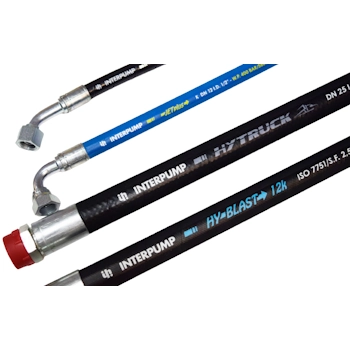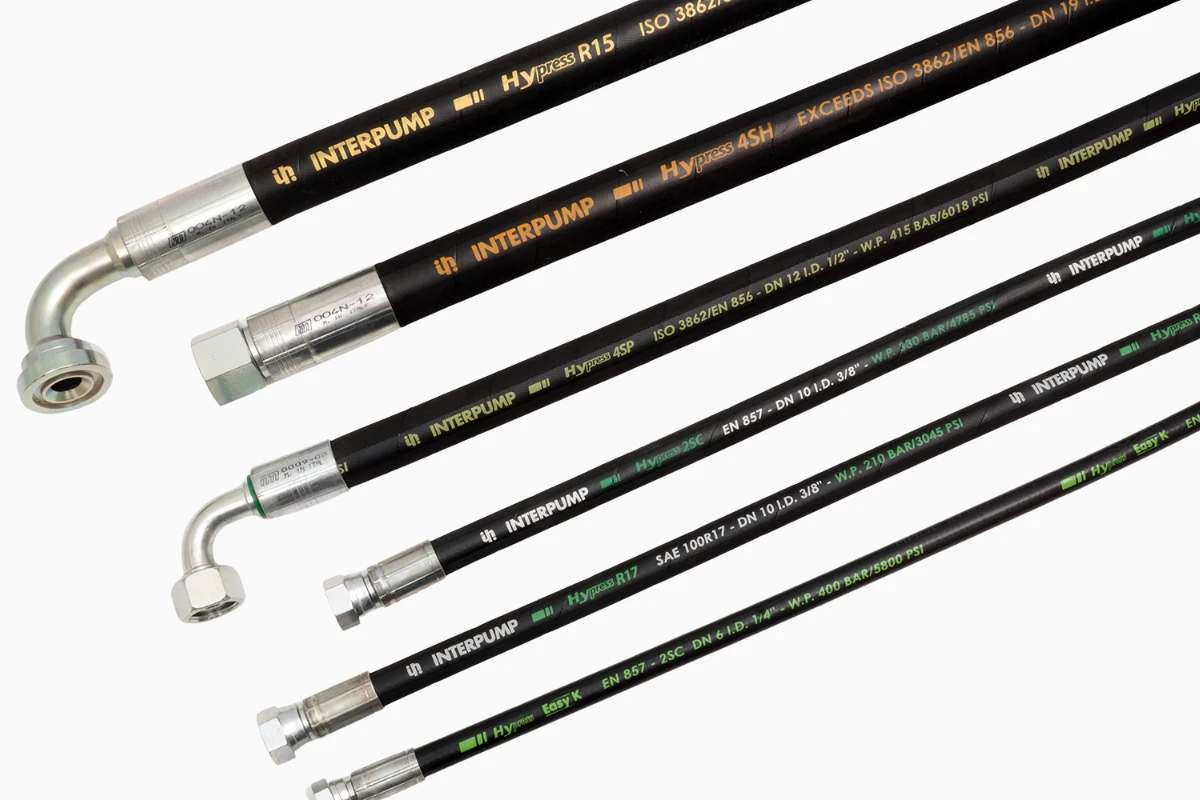In the hydraulic sector, choosing the right hose is essential to ensure the efficiency, safety, and longevity of the entire system. When asking what are the types of hydraulic hoses, it’s important to start with the materials they are made from and their technical properties. Hydraulic hoses must withstand high pressures, continuous fluid flow, and often extreme environmental conditions.
The most common materials include reinforced synthetic rubber, thermoplastics, and flexible steel. Each composition has specific advantages: rubber is flexible and abrasion-resistant, while thermoplastic hoses offer high chemical resistance and are lighter. Steel hoses, on the other hand, are ideal for very high pressures or static applications due to their structural strength.
Multi-layer construction (up to six) and the presence of braided or spiral steel reinforcement determine the hose’s ability to withstand different pressure levels, from medium to ultra-high. The choice of reinforcement type is closely related to the intended application.
So, let’s find out what the types of hydraulic hoses are. 
Applications and selection criteria
Each type of hose is designed for a specific use. In industrial and mobile environments, the choice of hose depends on several factors: operating pressure, type of fluid transported, temperature, bending radius, and frequency of use. Earth-moving machinery, agricultural systems, and lifting equipment, for example, require different solutions compared to static systems in fixed installations.
Another important aspect concerns industry certifications and regulations, which ensure the hoses comply with expected operating conditions. The presence of specific outer coatings can provide protection against ozone, abrasion, or chemicals, extending the component’s service life.
To find the most suitable solution for your application needs, it’s helpful to rely on specialized suppliers. On the dedicated page Hoses and Accessories – Quality Solutions – LubeTeam, you can explore a wide range of certified products designed for every industrial or mobile context.
Maintenance and signs of wear
Even the best hydraulic hoses, if not regularly maintained, can lose performance or pose a safety risk. Cracks, bulges, leaks, or discoloration are clear signs the hose needs replacement. In environments with high stress, it’s good practice to carry out periodic visual inspections and follow the manufacturer’s recommendations for replacement intervals.
Preventive maintenance and scheduled replacement help reduce downtime and prevent damage to more expensive components. The use of suitable fittings and accessories also contributes to maintaining system integrity and ensuring long-term optimal performance.

